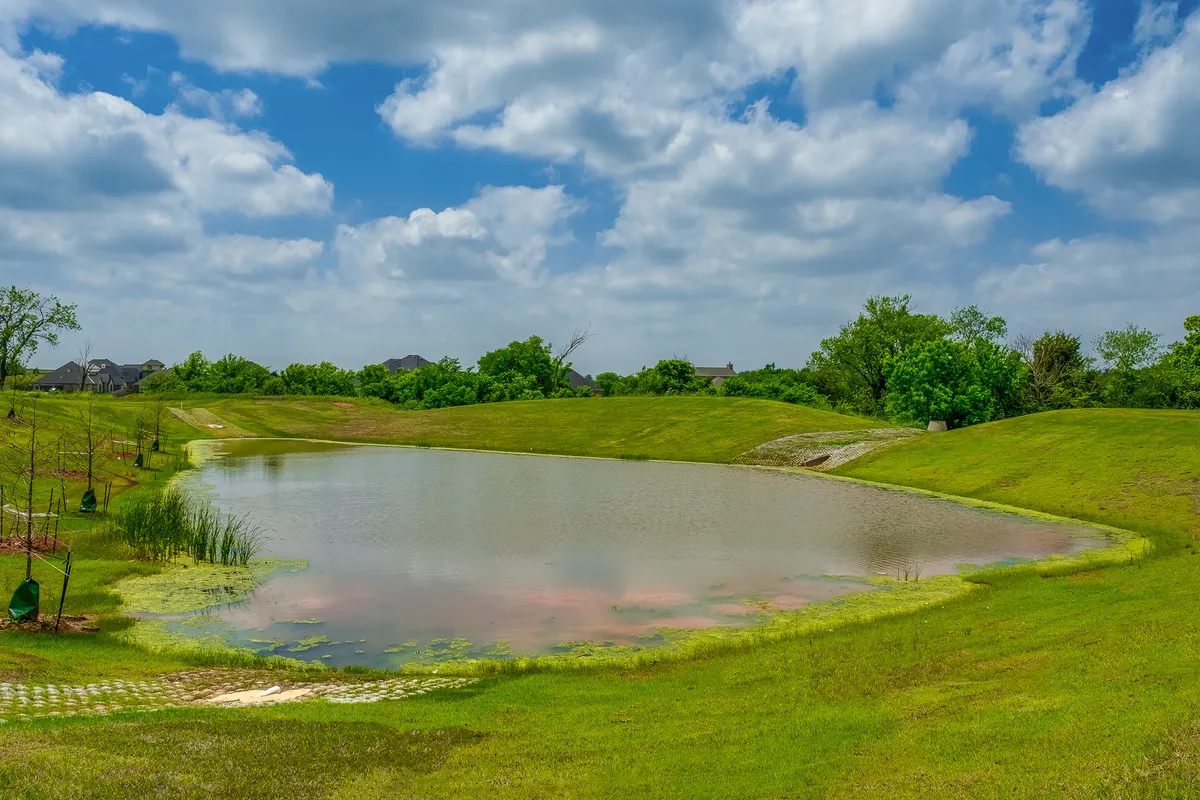Preserving Water on Ideal Construction Sites

January 9, 2024
Oklahoma Department of Environmental Quality says stormwater runoff from typical construction sites may carry significant amounts of sediment and pollutants that could potentially harm streams, lakes and wetlands. As stormwater flows through a construction site, it can pick up sediment, debris and chemicals, transport them to a storm sewer system, and eventually end up in our local streams.
To help lead efforts for higher environmental quality and preserve Oklahoma water, Ideal Homes & Neighborhoods is partnering with a research team led by Dr. Keith Strevett and Dr. Jason Vogel at the University of Oklahoma (OU) to conduct research funded by the Oklahoma Department of Transportation[VJR1] on the effectiveness of sediment control barriers in the new community of Flint Hills in northern Norman. The stormwater that drains from Flint Hills flows into Little River, then to Lake Thunderbird, and eventually runs to the Mississippi River and Gulf of Mexico.

Ideal Homes & Neighborhoods vice president of development, Zack Roach, says, “Ideal follows a strict Stormwater Pollution Prevention Plan (SWP3) set by the federal, state, and city governments to protect water. Ideal began working with OU to further prevent sediment from leaving the construction site. Our goal is to improve water runoff from our communities and help purify Oklahoma water by filtering beyond what is required.”
“This direct side-by-side testing includes three prominent sediment control devices: compost filter sock, silt fence and Triangle Silt Dike,” said Nathan Wright, graduate research assistant with the University of Oklahoma School of Civil Engineering and Environmental Science.

“These sediment control devices minimize sediment transportation from construction sites that can cause poor water quality. Results obtained from this research will provide engineers, developers, and municipalities with critical information to help them choose which sediment control device to use to prevent sediment and nutrient movement off of their construction site,” Wright stated.
Preventing sediment from leaving the site allows for cleaner water and reduces sedimentation in the lakes and rivers. This means healthier fish beds, a better drinking water source, and overall, a healthier environment.
Note: This research partnership does constitute an endorsement of Ideal Homes by either the University of Oklahoma or the Oklahoma Department of Transportation.
Sources:
Oklahoma Environmental Quality – deq.ok.gov
Oklahoma Water Survey – ou.edu/okh2o
Latest Posts
April 24, 2025
Get to know Mustang, Oklahoma: New Home Guide
April 24, 2025
Get to know Yukon, Oklahoma: New Home Guide
April 15, 2025
Newcomer’s guide to the new home construction process
March 20, 2025
Get to know Norman, Oklahoma: New Home Guide
March 20, 2025
Get to know Edmond, Oklahoma: New Home Area Guide
March 11, 2025
The Ideal Homes Difference, Rooted in Every Tree
March 11, 2025
Oklahoma Spring Gardening Guide
March 11, 2025
Expert Landscaping for Your New Home in Oklahoma | Ideal Homes
February 11, 2025
Valentine’s Date Night Near Your Ideal Home
Next Article


